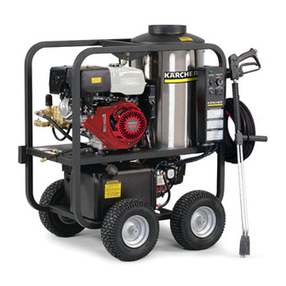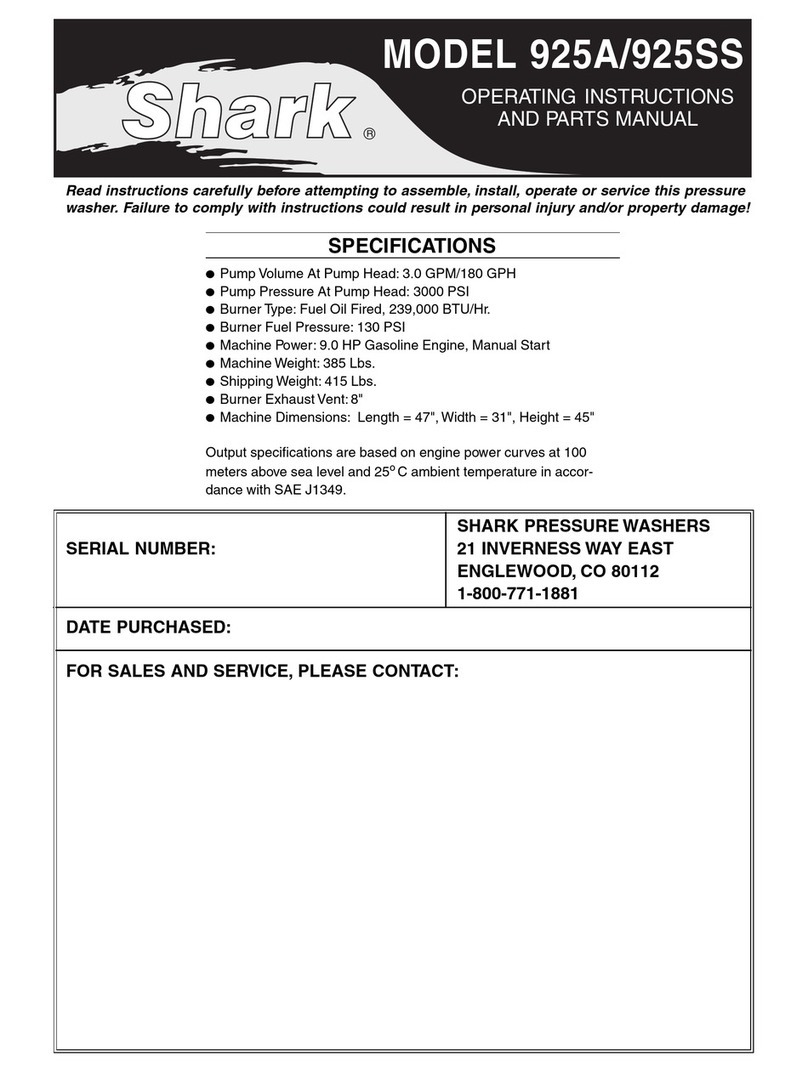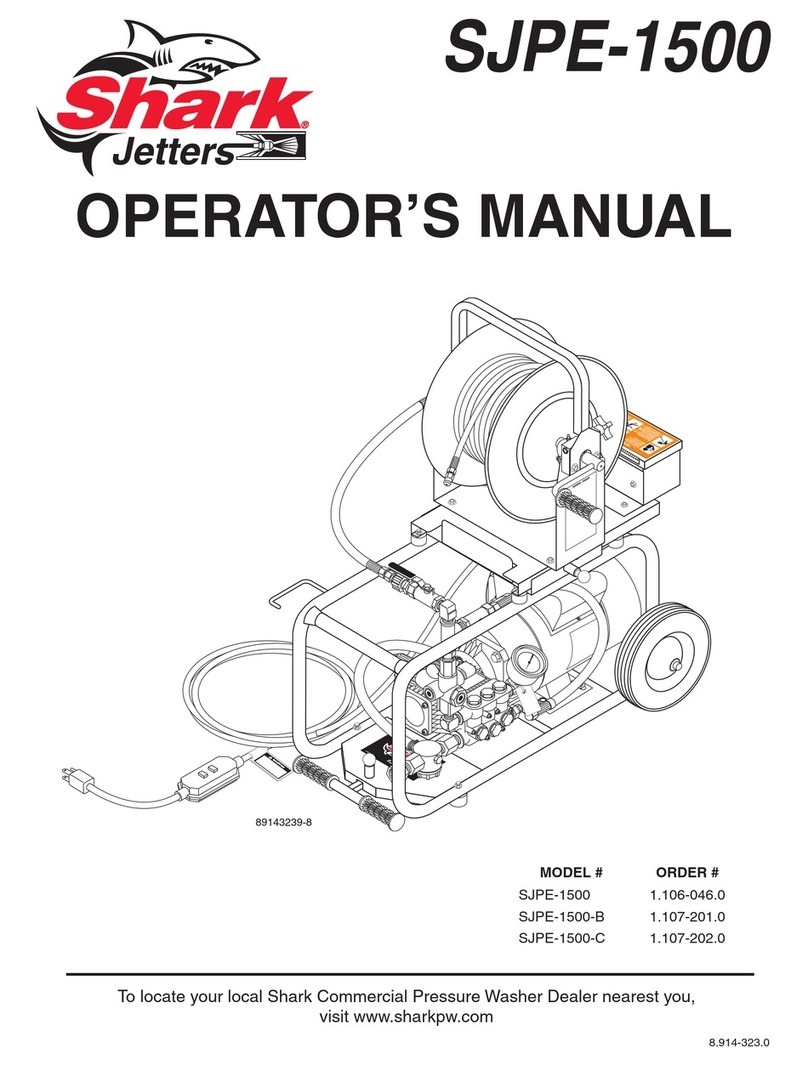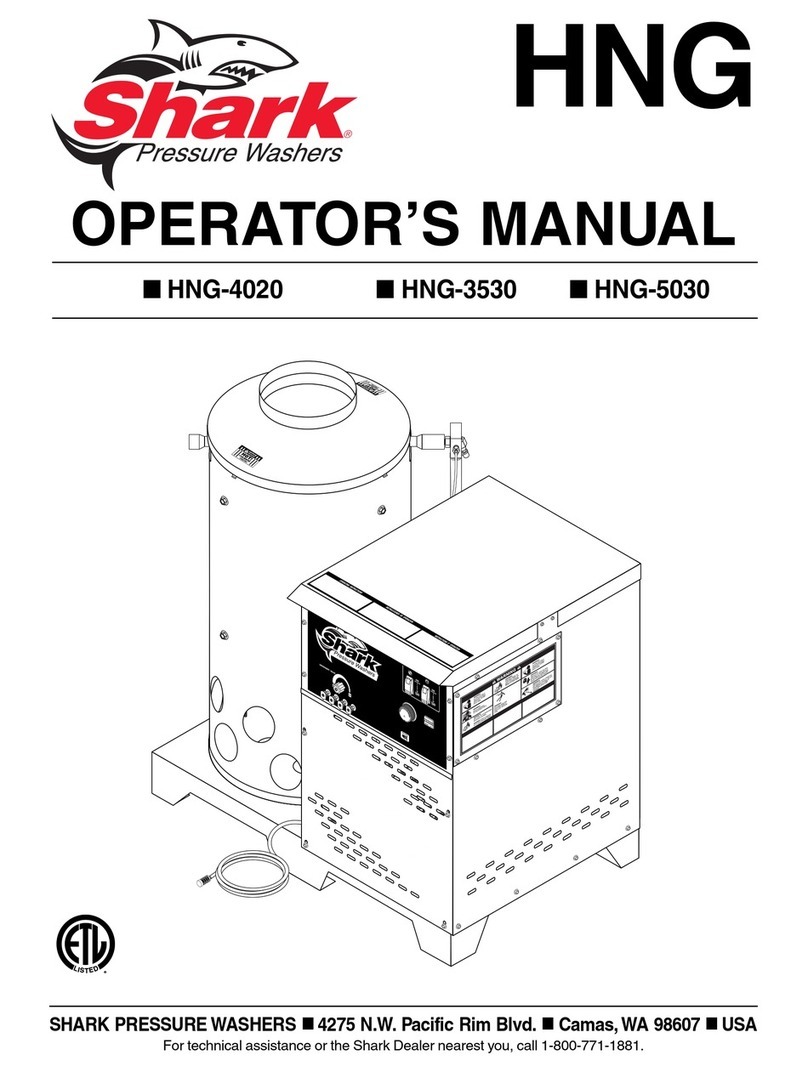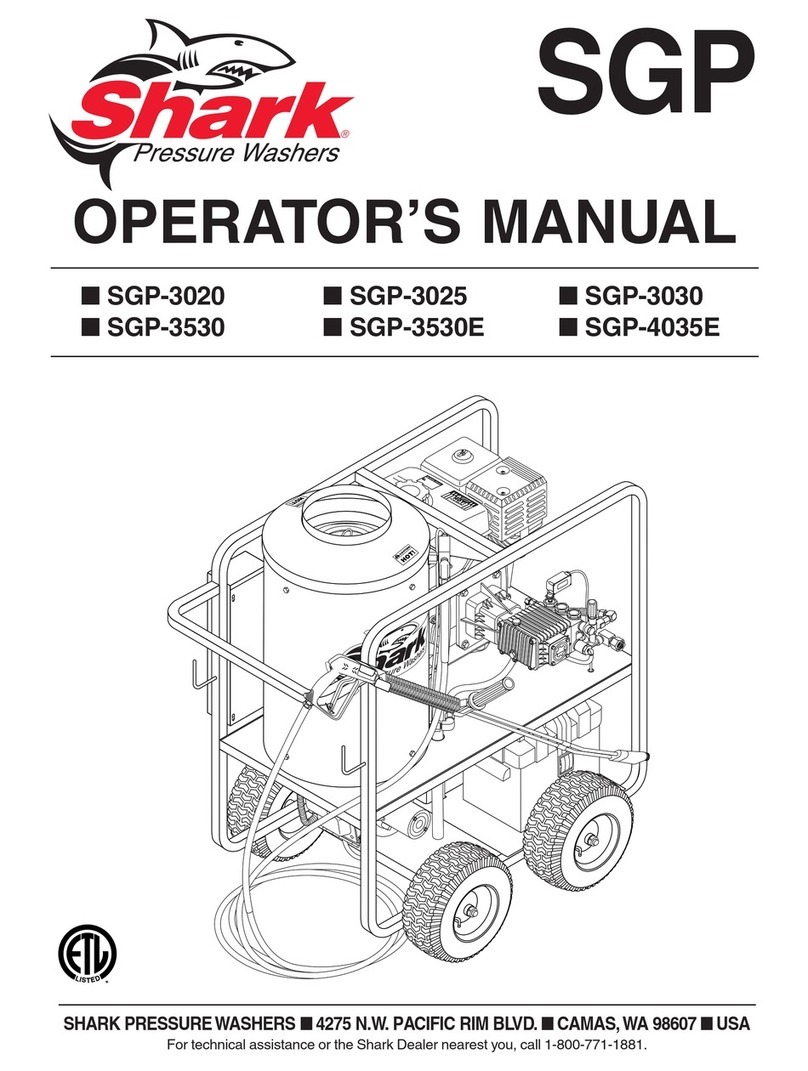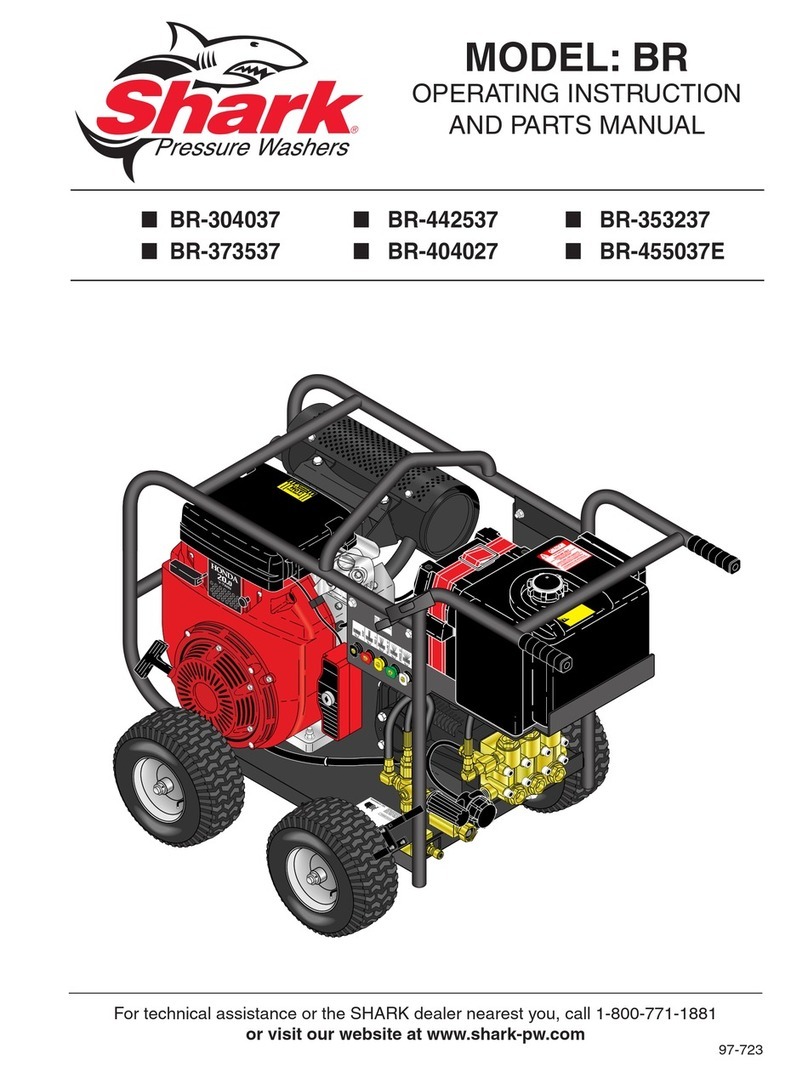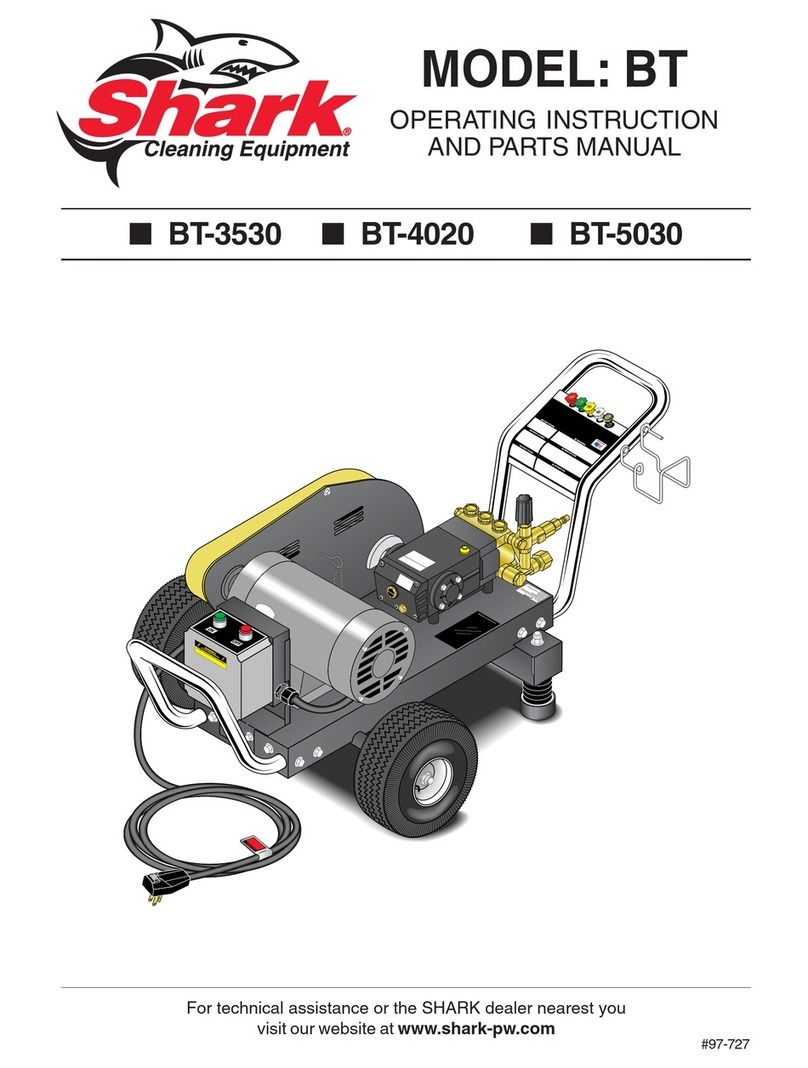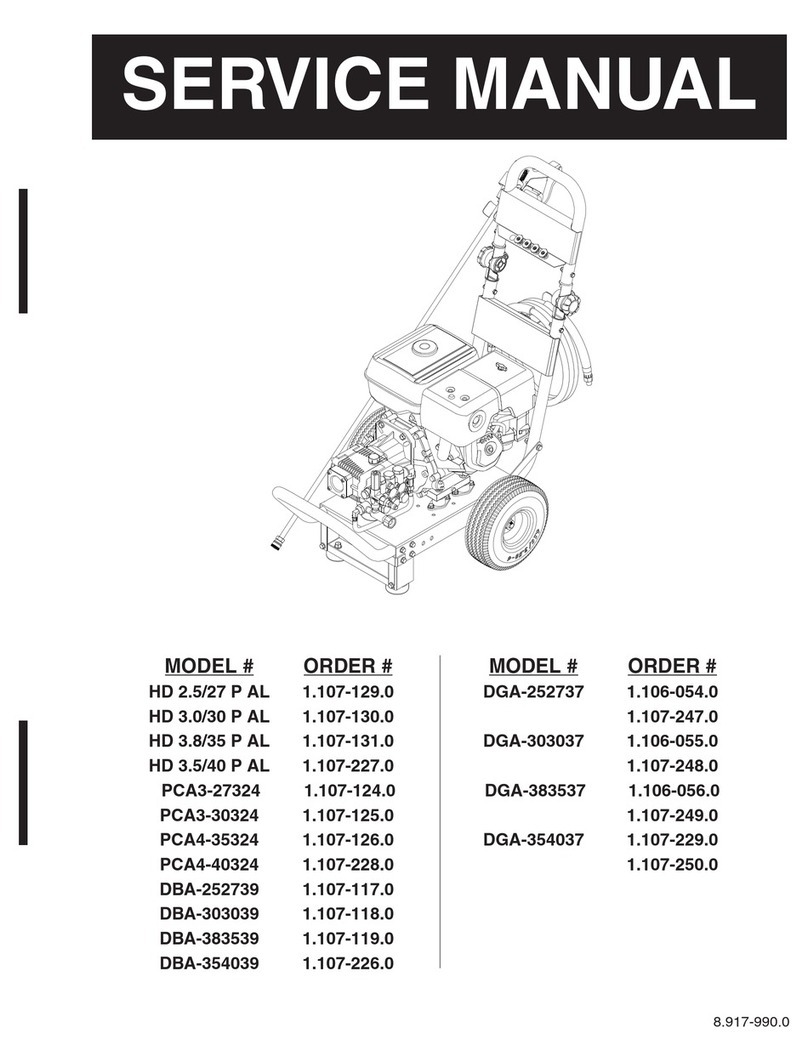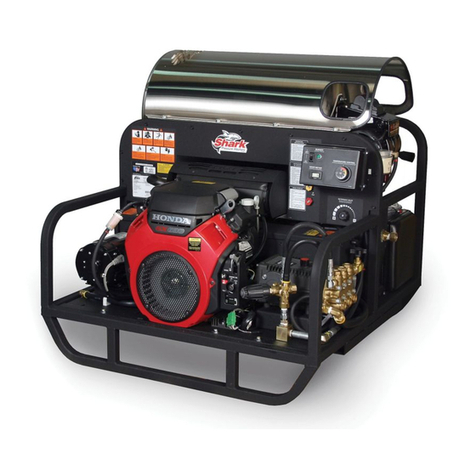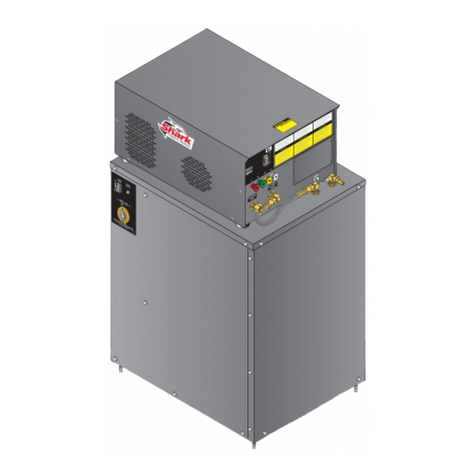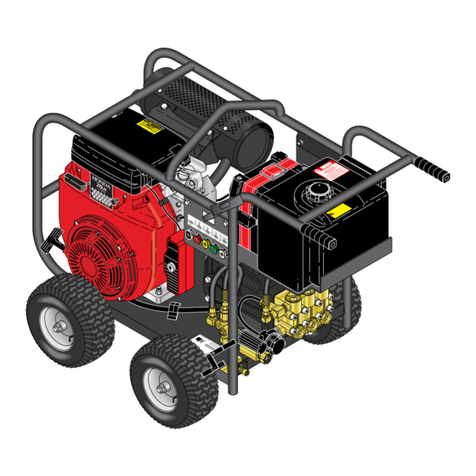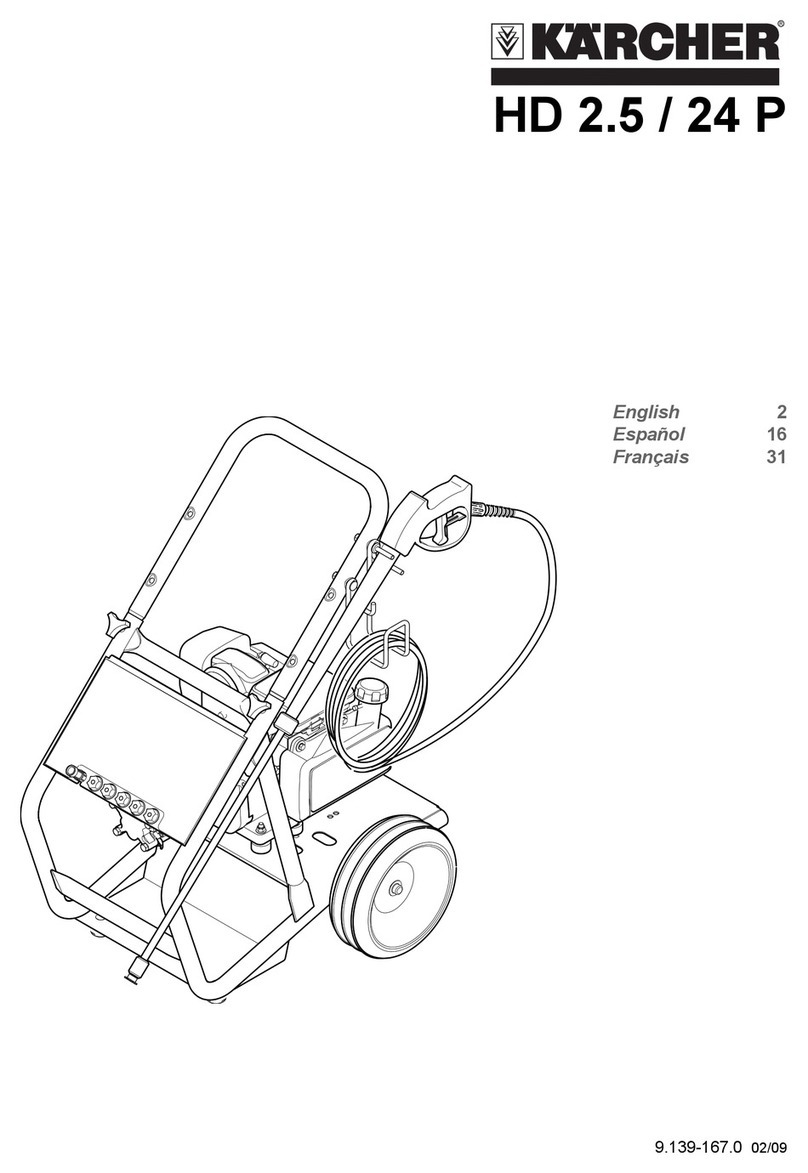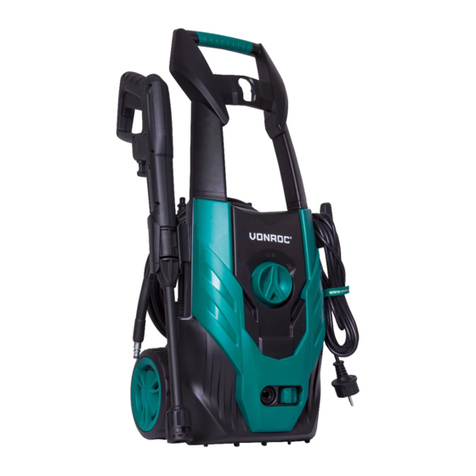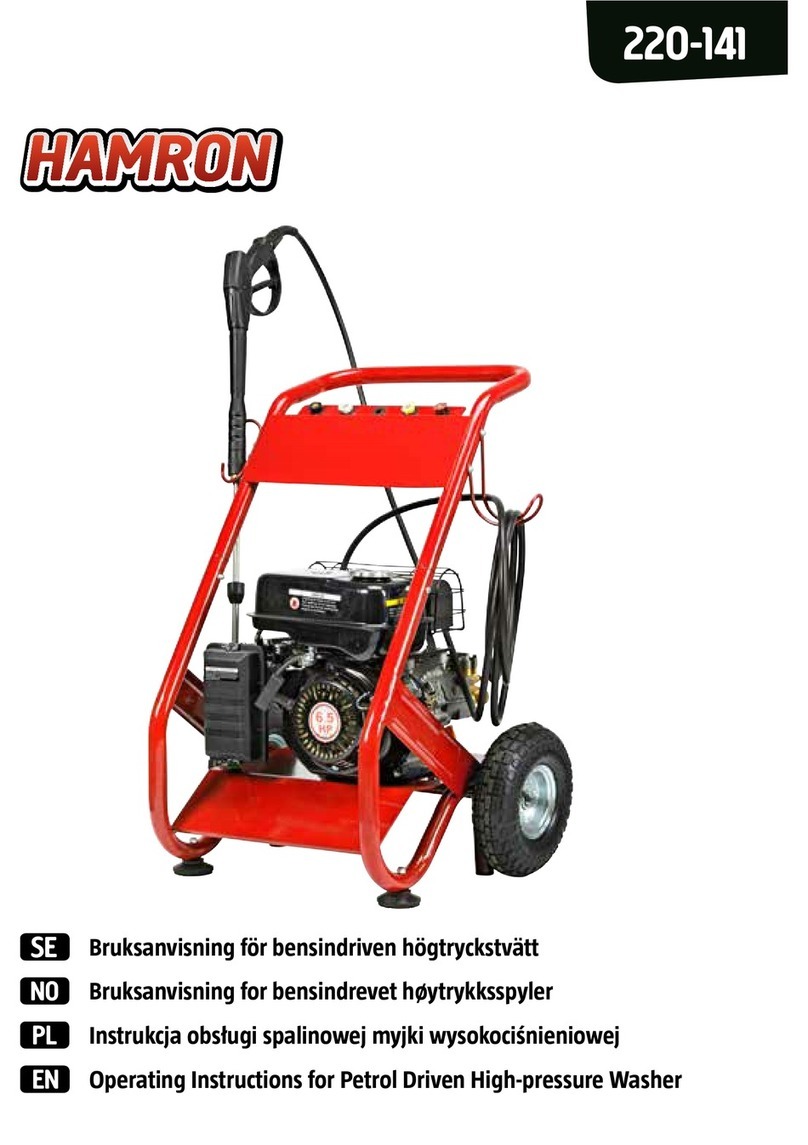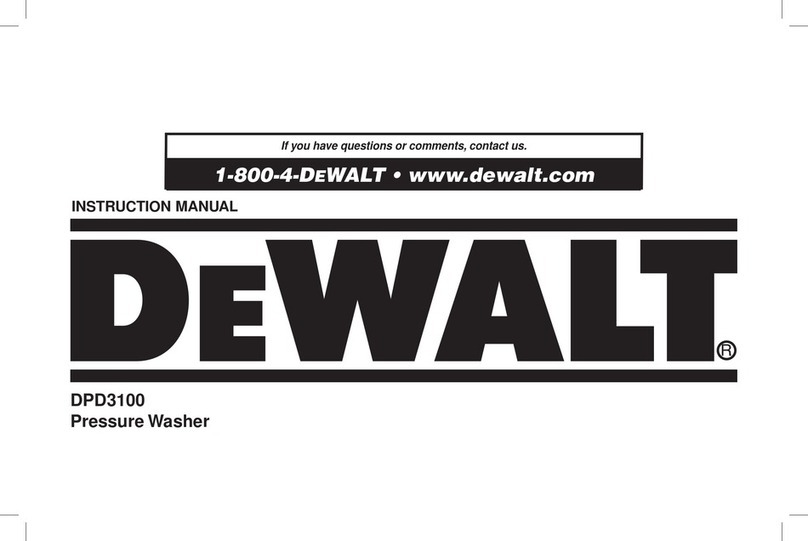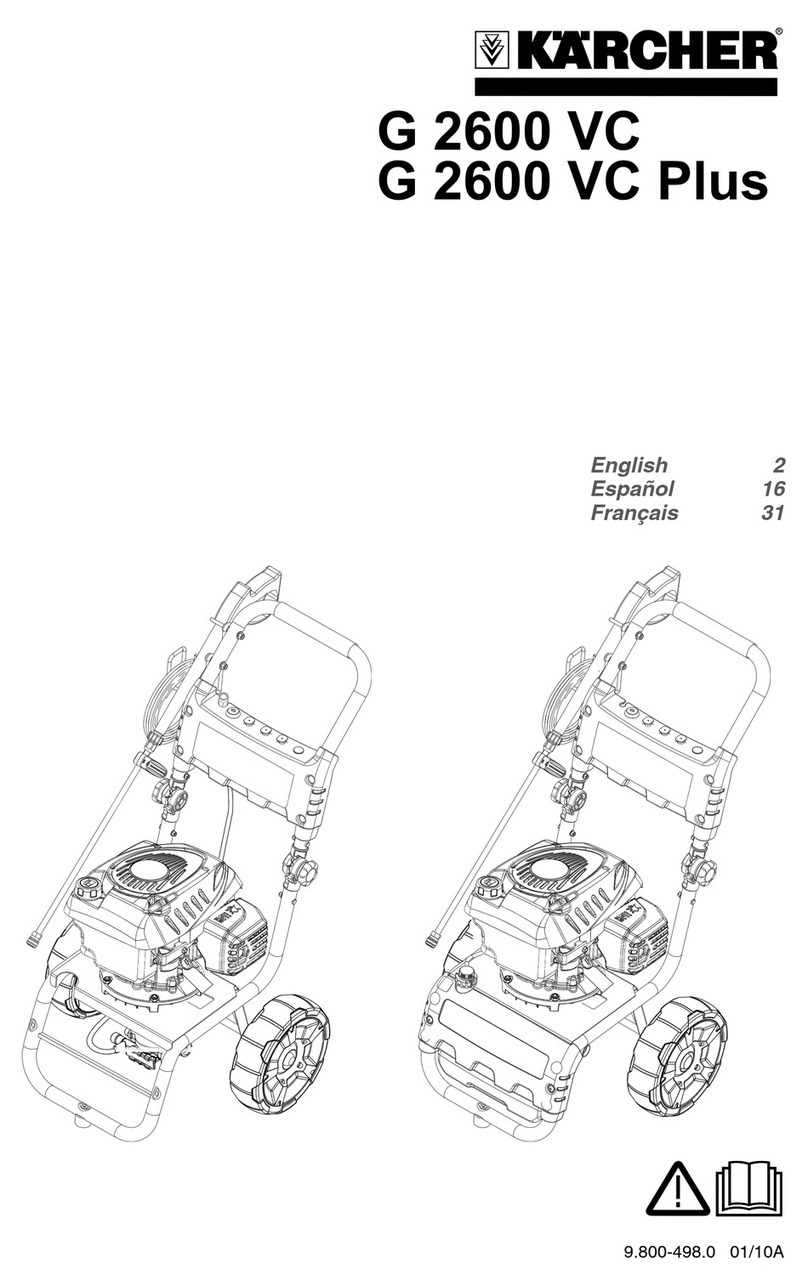
SHARK HNG • 97-610 • REV. 3/06
5
PRESSURE WASHER OPERATOR’S MANUAL
Thank you for purchasing our pressure washer.
This manual covers the operation and maintenance
of the 402007A, 353007A, 503007B and 503007C
model washers. All information in this manual is based
on the latest product information available at time of
printing.
We reserve the right to make changes at any time
without incurring any obligation.
Owner/User Responsibility:
The owner and/or user must have an understanding of
the manufacturer’s operating instructions and warnings
before using this pressure washer.Warning information
should be emphasized and understood. If the opera-
tor is not fluent in English, the manufacturer’s instruc-
tions and warnings shall be read to and discussed
with the operator in the operator’s native language by
the purchaser/owner, making sure that the operator
comprehends its contents.
Owner and/or user must study and maintain for future
reference the manufacturers’ instructions
This manual should be considered a permanent
part of the machine and should remain with it
if machine is resold.
When ordering parts, please specify model and
serial number.
IMPORTANT SAFETY
INFORMATION
WARNING: When using this machine basic pre-
cautions should always be followed, including
the following:
CAUTION:To reduce the risk of
injury, read operating instruc-
tions carefully before using.
1. Read the owner's manual
thoroughly. Failure to follow
instructions could cause
malfunction of the machine
and result in death, serious
bodily injury and/or property
damage.
2. All installations must comply with local codes.Con-
tact your electrician, plumber, utility company or
the selling distributor for specific details.
To comply with the National Electrical code (NFPA
70) and provide additional protection from risk of
electric shock, this pressure washer is equipped
with a UL approved ground fault circuit interrupter
(GFCI) power cord for machines rated 250V 30
amp or less, single phase.
3. Know how to stop the machine and bleed pres-
sures quickly. Be thoroughly familiar with the
controls.
4. Stay alert. Watch what you are doing.
WARNING: Flammable liquids
can create fumes which can
ignite causing property dam-
age or severe injury.
5. Risk of explosion - Do not
spray flammable liquids or
operate in an explosive lo-
cation. Operate only where
open flame or torch is per-
mitted.
WARNING: Keep water spray
away from electrical wiring or
fatal electric shock may result.
Read warning tag on electrical
cord.
6. To protect the operator from
electrical shock, the machine
must be electrically ground-
ed. It is the responsibility
of the owner to connect this
machine to a UL grounded receptacle of proper
voltage and amperage ratings. Do not spray water
on or near electrical components. Do not touch
machine with wet hands or while standing in water.
Always disconnect power before servicing.
WARNING: Spray gun kicks back. Hold with both
hands.
7. Grip cleaning wand securely with both hands be-
fore starting the cleaner. Failure to do this could
result in injury from a whipping wand.
WARNING: Equipment can pro-
duce a high pressure stream of
fluid that can pierce skin and its
underlying tissues, leading to
serious injury and possible
amputation.
8. High pressure developed by
these machines can cause
personal injury or equipment
damage. Use caution when operating. Do not
direct discharge stream at anyone or at any part
of the body, or severe injury or death will result.
This machine is to be used only by qualified op-
erators.
READ OPERATOR’S
MANUAL
THOROUGHLY
PRIOR TO USE.
CAUTION
RISK OF INJECTION
OR SEVERE INJURY
TO PERSONS. KEEP
CLEAR OF NOZZLE.
RISK OF EXPLOSION:
DO NOT SPRAY FLAM-
MABLE
LIQUIDS.
KEEP WATER SPRAY
AWAY FROM
ELECTRICAL WIRING.
INTRODUCTION & SAFETY INFORMATION

